Are you tired of dealing with unwanted pests in your home or office? Look no further! The article “Pest Control Services” provides valuable information and solutions for all your pest-related problems. From eliminating stubborn ants and cockroaches to getting rid of pesky rodents, this article covers it all. Say goodbye to sleepless nights worrying about creepy crawlies with the help of professional pest control services. So sit back, relax, and let us guide you through this informative article!
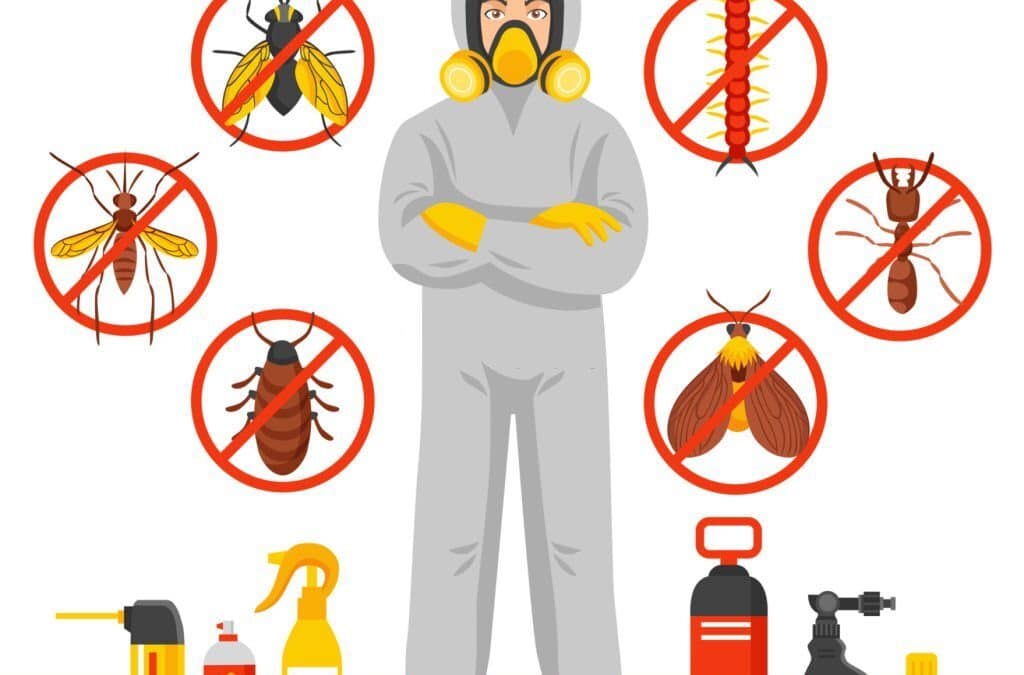
Types of Pests
Insects
Insects are one of the most common types of pests that can invade your home or property. They come in various forms, such as ants, cockroaches, spiders, and flies. In addition to being a nuisance, some insects like mosquitoes can also transmit diseases. It’s important to identify and address insect infestations promptly to prevent further damage and ensure the safety and hygiene of your surroundings.
Rodents
Rodents, such as rats and mice, are another prevalent type of pest that can cause significant damage to your property. They can chew through wires, gnaw on furniture, contaminate food sources, and even spread diseases. Rodents are known for their ability to reproduce rapidly, which can lead to a full-blown infestation if not controlled in a timely manner.
Birds
While birds may seem harmless, they can create problems when they start nesting in or around your property. Their droppings can be acidic and cause damage to buildings, vehicles, and vegetation. Birds can also transmit various diseases through their droppings and feathers. Proper pest control measures are necessary to discourage birds from nesting in unwanted areas.
Termites
Termites are a type of pest that can silently cause extensive damage to the structure of your property. They feed on wood and other cellulose-based materials, which can weaken the foundation and compromise the integrity of your building. It’s essential to identify termite infestations early on and implement effective pest control measures to prevent severe structural damage.
Mosquitoes
Mosquitoes are not only annoying pests that can ruin your outdoor activities; they are also carriers of dangerous diseases, such as malaria, dengue, Zika virus, and West Nile virus. With their ability to breed in stagnant water and their preference for human blood, mosquitoes can quickly multiply and become a health hazard. Controlling mosquito populations is crucial for maintaining a safe and comfortable environment.
Signs of Pest Infestation
Visible droppings
One of the most obvious signs of a pest infestation is the presence of visible droppings. Whether it’s rodent droppings, insect excrement, or bird feces, the sight of droppings around your property is a clear indication that pests have made themselves at home. If you notice droppings in and around your living spaces, it’s important to take immediate action to prevent the infestation from worsening.
Strange smells
Unpleasant odors can also be a sign of a pest infestation. Certain pests, like rodents and birds, can produce strong, musky smells due to their droppings or urine. These smells can linger in confined spaces and become more prominent over time. If you detect any unusual or foul odors that you can’t trace back to any other source, it’s advisable to investigate for a potential pest problem.
Gnaw marks
Gnaw marks on furniture, electrical wires, or other objects are a tell-tale sign of a rodent infestation. Rodents have a constant need to gnaw on objects to keep their teeth from growing too long, and they will target anything within their reach. If you come across chewed items or notice damaged cables with exposed wires, it’s crucial to address the issue promptly to prevent further damage and potential safety hazards.
Nests or burrows
Discovering nests or burrows in and around your property is a clear sign of pest activity. Birds often build nests in nooks and crannies, while rodents dig burrows for shelter. Identifying these nests, along with accompanying materials such as twigs, leaves, or shredded paper, can help you determine the type of pest infestation and take the appropriate measures to eradicate it.
Damaged plants
If you have a garden or plants indoors, keep an eye out for any signs of damage. Insects, such as aphids and caterpillars, can munch on leaves and stems, causing wilting or discoloration. Additionally, termites can feast on the wooden parts of plants, leading to their decay and eventual death. Regularly inspecting your plants and addressing any signs of pest damage can help preserve their health and beauty.
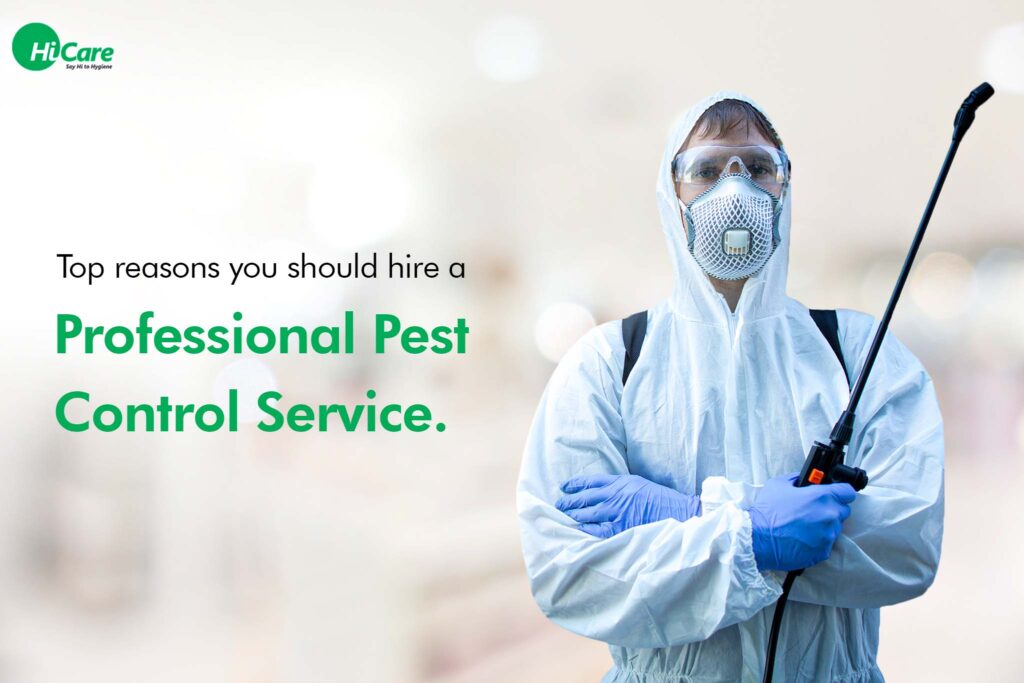
Importance of Pest Control
Preserving health and hygiene
Pest control plays a vital role in maintaining health and hygiene standards. Many pests are carriers of disease-causing microorganisms, which can contaminate surfaces, food sources, and air quality. By effectively controlling pests, you reduce the risk of contracting illnesses and ensure a safer environment for you and your family.
Preventing property damage
Pests, especially rodents and termites, can cause significant damage to your property. Rodents can chew through wiring, leading to electrical malfunctions and even fire hazards. Termites, on the other hand, can weaken the structure of your home by feeding on wooden components. Regular pest control measures can help prevent costly repairs and preserve the value of your property.
Avoiding allergies and diseases
Many people suffer from allergies triggered by pests like dust mites, cockroaches, and rodents. Allergies can cause respiratory problems, skin irritations, and other discomforts. Additionally, pests like mosquitoes and ticks can transmit serious illnesses, such as Lyme disease and West Nile virus. By eliminating or controlling pests, you can reduce the risk of allergies and protect yourself from harmful diseases.
Maintaining food safety
Pests can contaminate food sources through droppings, urine, or direct contact. This contamination can lead to foodborne illnesses and pose a threat to your overall well-being. Proper pest control measures, especially in food processing facilities and restaurants, are essential for ensuring the safety and integrity of the food supply chain.
Protecting the environment
While it may seem counterintuitive, pest control can also contribute to environmental protection. Uncontrolled infestations often lead to the excessive use of chemical pesticides, which can harm beneficial insects, wildlife, and ecosystems. By implementing eco-friendly pest control methods, you can strike a balance between eradicating pests and preserving the natural environment.
Common Pest Control Methods
Biological control
Biological control is a method that utilizes natural predators or parasites to manage pest populations. This approach involves introducing or enhancing the presence of beneficial organisms that prey on or parasitize pests, effectively reducing their numbers. It is an environmentally friendly alternative to chemical pesticides and can be utilized in both agricultural and residential settings.
Chemical control
Chemical control is the most commonly used method of pest control. It involves the application of chemical substances, such as insecticides or rodenticides, to eliminate pests. Different chemicals target specific pests, and their effectiveness depends on proper application and adherence to safety guidelines. While chemical control can be highly effective, it should always be carried out by trained professionals to ensure safety and minimize environmental risks.
Physical control
Physical control methods involve physically blocking or removing pests from the affected area. Examples include installing screens on windows to prevent insect entry, setting up traps for rodents, or using barriers to deter birds from nesting. Physical control methods are often used in conjunction with other pest control techniques to optimize effectiveness.
Cultural control
Cultural control refers to practices aimed at preventing and managing infestations through changes in human behavior and land management. This could include proper waste management, maintaining cleanliness, and practicing good hygiene to minimize pest attraction. Cultural control emphasizes long-term prevention rather than relying solely on reactive measures.
Mechanical control
Mechanical control methods rely on physical devices and tools to eliminate or contain pests. Examples include using vacuum cleaners to remove insects, employing light traps to capture flying pests, or employing physical barriers to prevent pest access. Mechanical control methods are often effective for smaller-scale infestations and can be used in combination with other pest control strategies.
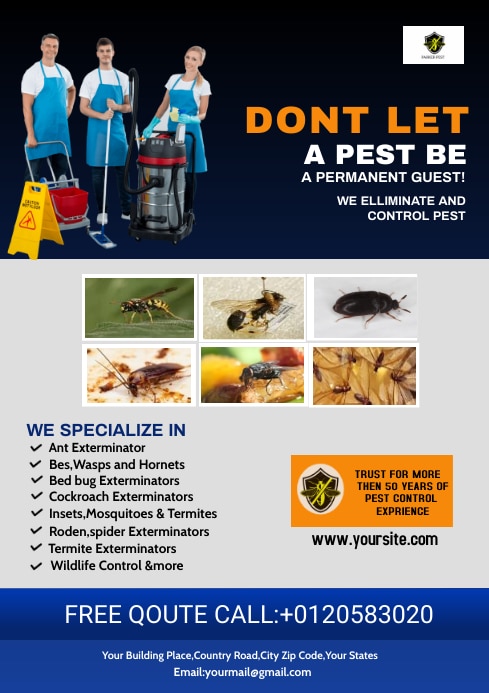
DIY Pest Control vs Professional Services
Advantages of DIY pest control
DIY pest control methods can be cost-effective, especially for minor pest problems. There are numerous DIY pest control products available in the market, ranging from sprays and traps to natural remedies. DIY methods also give you the flexibility to address infestations promptly without having to wait for professional services. Additionally, DIY pest control allows you to learn about the behavior and habits of pests, enabling you to take preventive measures in the future.
Advantages of professional pest control
Professional pest control services offer several advantages over DIY methods. Pest control professionals have the knowledge, experience, and expertise to identify and handle a wide range of pests. They are trained to safely and effectively use chemical products, ensuring minimal risks to humans and the environment. Professionals also provide comprehensive pest control plans, including preventive measures and ongoing monitoring, to ensure long-term pest management.
Disadvantages of DIY pest control
While DIY methods can be effective for minor infestations, they may not be sufficient for severe or recurring pest problems. Inadequate knowledge or improper use of DIY products can lead to ineffective results or even exacerbate the infestation. DIY methods may also not address the root cause of the pest problem, allowing it to persist and potentially worsen over time.
Disadvantages of professional pest control
One of the main disadvantages of professional pest control services is the cost. Professional services can be more expensive than DIY methods, especially for long-term treatment plans or recurring pest problems. Additionally, scheduling appointments and relying on external services can require some flexibility and coordination. However, the expertise and peace of mind provided by professional services often outweigh these disadvantages.
Choosing the Right Pest Control Service
Licensing and certification
When choosing a pest control service, it’s crucial to ensure that the company is licensed and certified. Licensing indicates that the company has met industry standards and complies with regulations. Certification from reputable organizations demonstrates the company’s commitment to professionalism and continuous training.
Experience and expertise
Look for pest control services with a proven track record and extensive experience in dealing with your specific pest problem. An experienced provider will have a better understanding of pest behavior, enabling them to tailor effective solutions for your situation. Choose a company that specializes in the pests you are dealing with to ensure optimal results.
Safety measures and precautions
Pest control involves the use of potentially hazardous substances. It is essential to choose a service provider that prioritizes safety and follows strict protocols to protect both humans and the environment. Ask about the safety measures and precautions they take during the treatment process, as well as any long-term effects or risks associated with their methods.
Eco-friendly practices
If environmental sustainability is important to you, consider hiring a pest control service that emphasizes eco-friendly practices. Look for companies that use natural or organic products, implement integrated pest management (IPM) approaches, and promote environmental stewardship. Eco-friendly pest control methods can reduce the impact on non-target organisms and help preserve biodiversity.
Customer reviews and recommendations
Check online reviews and testimonials from previous customers to gauge the reputation and reliability of the pest control service. Positive reviews and recommendations from trusted sources can give you confidence in their abilities. Additionally, consider asking friends, neighbors, or colleagues for recommendations based on their personal experiences.
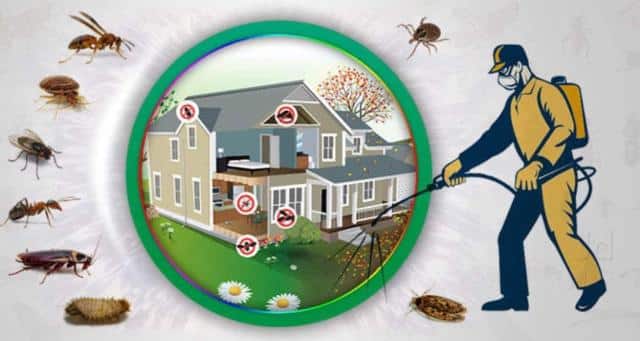
Steps in Pest Control Process
Inspection and assessment
The first step in the pest control process is a thorough inspection and assessment of your property. A pest control professional will examine the affected areas, identify the pest species, assess the extent of the infestation, and look for any underlying factors that may be contributing to the problem.
Identification of pest types
Once the inspection is complete, the pest control professional will identify the specific type of pest causing the infestation. Pinpointing the pest species is crucial for determining the most effective control methods and developing a targeted treatment plan.
Development of pest control plan
Based on the inspection and pest identification, the pest control professional will create a customized pest control plan. This plan will outline the strategies, tools, and products that will be used to eliminate the infestation and prevent future occurrences.
Implementation of pest control methods
After the plan is developed, the pest control professional will proceed with implementing the appropriate pest control methods. This may involve the application of chemical treatments, setting up traps, sealing entry points, or implementing other targeted measures, depending on the pest species and the severity of the infestation.
Monitoring and follow-up
Pest control is an ongoing process, and regular monitoring is essential to ensure long-term effectiveness. The pest control professional will schedule follow-up visits to determine the success of the treatment plan and make any necessary adjustments. Monitoring allows for early detection of new infestations and ensures that the pest problem is fully resolved.
Preventive Measures for Pest Control
Proper waste management
One of the most effective ways to prevent pest infestations is through proper waste management. Regularly dispose of trash in sealed containers and ensure that garbage bins are tightly closed. Regularly clean outdoor areas, including gutters and drains, to prevent standing water that can attract mosquitoes and other pests. Proper waste management helps eliminate potential food and water sources for pests.
Sealing entry points
Pests can enter your property through small cracks and openings in walls, windows, doors, and utility lines. Seal any gaps or openings using caulk, weatherstripping, or mesh screens to prevent pests from gaining access to your home. Pay special attention to areas where utilities enter the building and seal them properly.
Regular cleaning and maintenance
Regular cleaning and maintenance are key to preventing pest infestations. Vacuum carpets, sweep floors, and wipe down surfaces regularly to remove crumbs and food residues that attract pests. Empty and clean pet food and water bowls daily. Keep storage areas clean and organized to minimize hiding spots for pests.
Reducing moisture and humidity
Many pests are attracted to moist and humid environments. Reduce humidity levels in your home by using dehumidifiers or ventilation systems. Fix any leaks or plumbing issues promptly to prevent water accumulation. Regularly clean and dry areas prone to moisture, such as bathrooms, kitchens, and basements, to deter pests.
Trimming vegetation
Overgrown vegetation can provide hiding places and easy access for pests. Trim trees, shrubs, and branches away from your home or property to eliminate bridges that pests can use to enter your living spaces. Maintain a gap between plants and exterior walls to minimize contact points for pests.
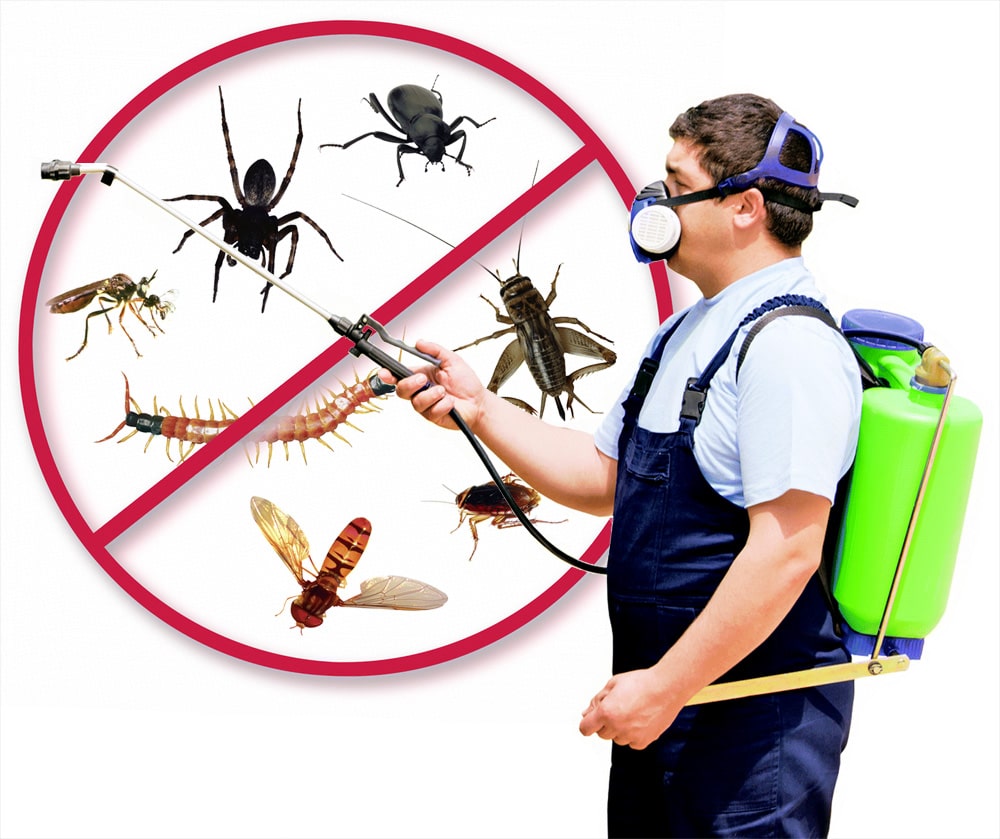
Cost Considerations
Factors influencing cost
The cost of pest control services can vary depending on several factors. Factors that may influence the cost include the type and severity of the infestation, the size of the property, the chosen control method, and the required frequency of treatments. Additionally, factors like the location and reputation of the pest control service can also impact the cost.
Average cost range
The average cost of pest control services can range from a few hundred to several thousand dollars, depending on the factors mentioned above. Minor infestations or one-time treatments are generally less expensive than recurring or extensive infestations. It’s advisable to get multiple quotes from different service providers to compare costs and choose the most reasonable option.
Types of service contracts
Pest control companies may offer different types of service contracts to accommodate various pest control needs. These contracts can range from one-time treatments to annual or ongoing service agreements. The type of contract you choose will depend on the severity of the infestation, your budget, and your desired level of ongoing pest management.
Comparing quotes
When obtaining quotes from pest control service providers, make sure to compare not only the cost but also the scope of services offered. Determine what treatments or services are included in the quote, whether there are any additional charges or hidden costs, and whether the company offers any guarantees or warranties for their services.
Value for money ratio
When considering the cost of pest control services, it’s important to assess the value for money ratio. While it may be tempting to opt for the cheapest service, it’s crucial to prioritize effectiveness and long-term results. Investing in professional services that offer comprehensive solutions and ongoing pest management can provide better value in the long run, as it reduces the risk of recurring or worsening infestations.
Tips for Effective Pest Control
Keep food sealed and stored properly
Pests are attracted to food sources, so it’s essential to keep your food sealed and stored properly. Invest in airtight containers to prevent pests from accessing your pantry. Clean up spills immediately, and don’t leave food crumbs or leftovers exposed. Regularly check expiration dates and discard expired food items.
Eliminate clutter and hiding spots
Pests thrive in cluttered environments and find refuge in hidden corners and crevices. Regularly declutter and organize your living spaces to eliminate hiding spots for pests. Pay special attention to areas such as basements, attics, and storage areas. Dispose of unnecessary items and seal cracks or gaps where pests may seek shelter.
Regularly inspect and maintain your property
Perform regular inspections of your property to identify any signs of pest activity or vulnerabilities. Look for cracks, gaps, or other entry points that pests can exploit. Take immediate action to repair any damages and seal off access points. Regular maintenance, such as repairing screens and fixing leaky pipes, can help prevent pest infestations.
Monitor and address pest problems promptly
Early detection and prompt action are key to effective pest control. Regularly monitor your property for any signs of pest activity, such as droppings, gnaw marks, or strange smells. If you suspect a pest problem, take immediate action to address it by either implementing appropriate DIY measures or contacting a professional pest control service.
Seek professional help when necessary
While DIY measures can be effective for minor infestations, it’s important to know when to seek professional help. If you have a severe or recurring pest problem, or if the infestation involves potentially harmful pests like termites or bed bugs, consulting a professional pest control service is advisable. They have the expertise and resources to handle complex situations and provide long-term solutions.
In conclusion, pest control is essential for maintaining a healthy, safe, and pest-free environment. By familiarizing yourself with the different types of pests, signs of infestation, and control methods available, you can make informed decisions regarding pest control measures. Whether you choose to tackle the problem yourself or enlist the help of professional services, the ultimate goal is to protect your health, property, and overall well-being.
